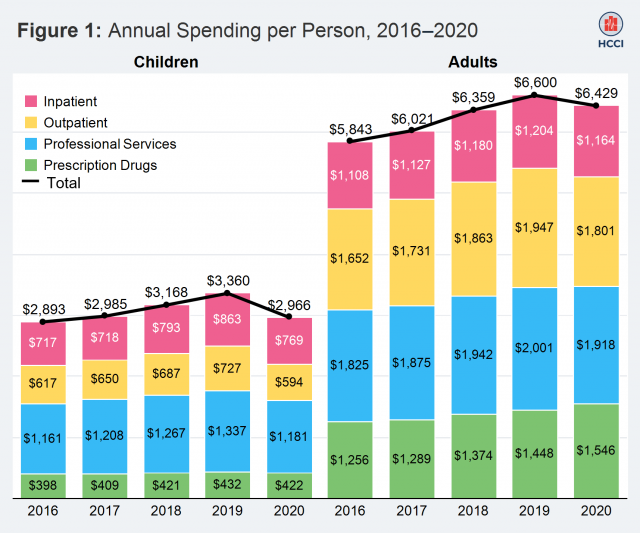All HCCI Reports
September 2022 HCCI Research Highlights
HCCI's data users and staff use our multi-payer, longitudinal commercial claims dataset to study some of the most pressing issues in the U.S. health care system. Here we highlight some recent research using HCCI data:

New Study Shows Patients Paying More Out-of-Pocket Costs for Cancer Care | American Cancer Society
A new, large study led by researchers at the American Cancer Society (ACS) and The University of Texas MD Anderson Cancer Center, using HCCI data, shows rising costs of cancer treatments led to increases in total costs of care, and when compounded with greater cost sharing, increased out-of-pocket (OOP) costs for privately insured, patients under 65 years old.

Children's Health Services 2020 Report | HCCI Original Research
The population with employer-sponsored health insurance (ESI) includes individuals who receive health insurance coverage from an employer, including employees and their dependents, such as spouses and eligible children. Half of the children in the U.S. are covered by ESI, making this form of coverage the largest source of insurance for American children. In this report, we present data on health care spending, utilization, and average prices among children (under age 18) who receive health insurance coverage through an employer. In HCCI's 2020 data, one-quarter of ESI enrollees were 18 years old or younger. The report relies on de-identified commercial health insurance claims contributed by CVS Health/Aetna, Humana, and Blue Health Intelligence.

COVID-19 Disrupted On-Time Vaccination Rates In ESI and Medicaid in 2020 | HCCI Original Research
To better understand this recent trend and inform public health practitioners about how best to allocate resources to increase vaccination rates, HCCI conducted an analysis of childhood vaccination trends in the U.S. from 2018-2020.

Comparison of Estimated No Surprises Act Qualifying Payment Amounts and Payments to In-Network and Out-of-Network Emergency Medicine Professionals | JAMA Health Forum
The No Surprises Act (NSA), which took effect on January 1, 2022, applies a qualifying payment amount (QPA) as an out-of-network payment reference point. An understanding of how QPA measures compare with the in-network and out-of-network payments physicians received before the NSA implementation may be useful to policy makers and stakeholders.
Stay Informed
When you subscribe to the blog, we will send you an e-mail when there are new updates on the site so you wouldn't miss them.
©
2025
Health Care Cost Institute Inc. Unless explicitly noted, the content on this website is licensed under a Creative Commons Attribution Non-Commercial No Derivatives 4.0 License
